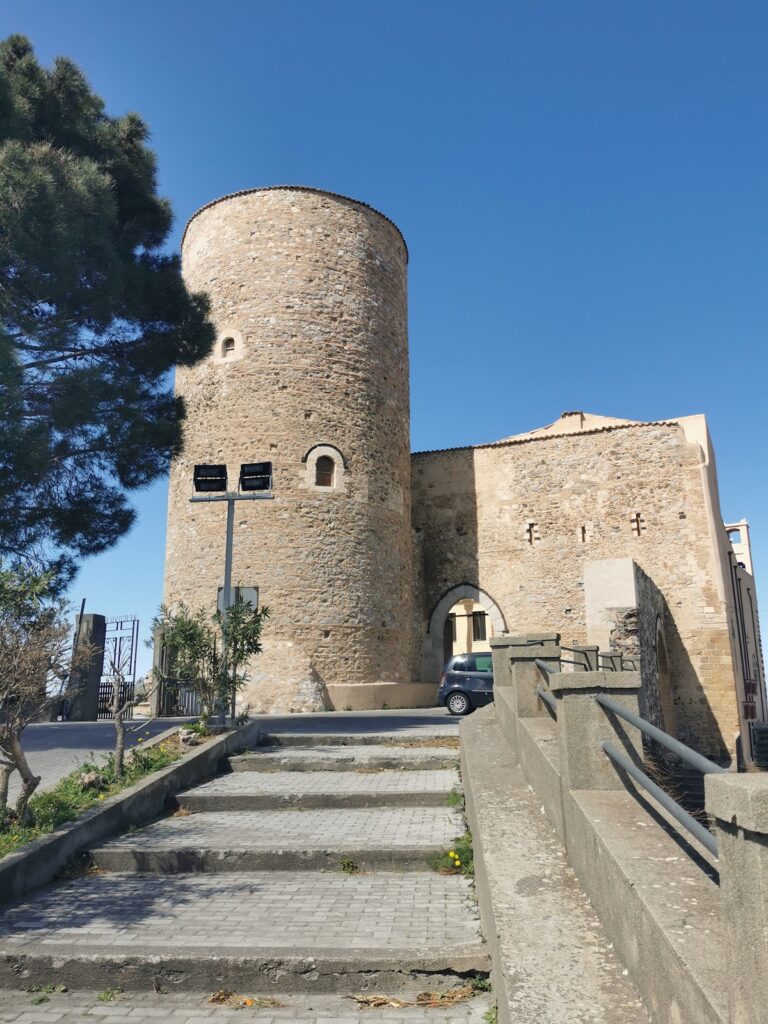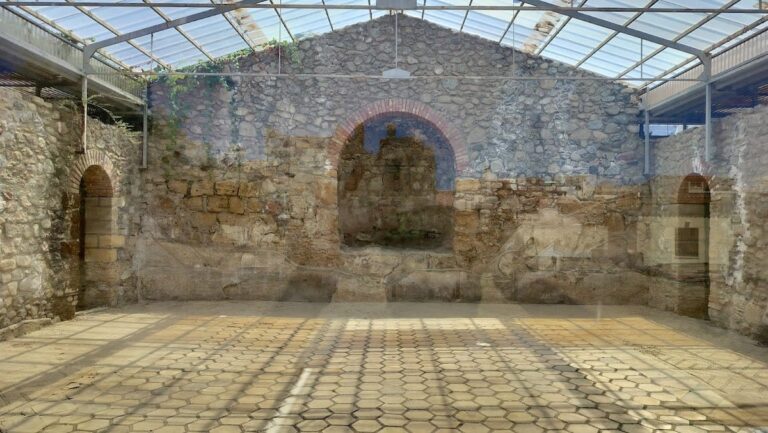Castello di Santa Lucia del Mela: A Historic Fortress and Religious Site in Italy
Visitor Information
Google Rating: 4.6
Popularity: Low
Google Maps: View on Google Maps
Country: Italy
Civilization: Unclassified
Remains: Military
History
The Castello di Santa Lucia del Mela stands atop Mankarru hill in the municipality of Santa Lucia del Mela, Italy. The site’s origins reach back to ancient times when it was established by Greek settlers, forming part of the Siceliot Greek world in the classical era.
From the 7th century BCE through the Roman period, the area developed as a fortified settlement. Roman influence is evident with the establishment of a castrum, a military camp or fortification, that controlled the surrounding territory. Following the collapse of the Roman Empire, the Byzantines maintained the site as a defensive stronghold known as Mankarru, possibly constructing their fortifications over earlier imperial structures such as towers or watch posts.
During the 11th and 12th centuries, Norman rulers built the core of the current castle. Their construction reflects the Siculo-Norman architectural style typical of that period and region. In the early 13th century, the castle served as a royal residence under the Swabian dynasty, notably hosting Emperor Frederick II of Swabia, who frequently used the site as a hunting retreat. It was also during this time that the surrounding territory was designated a “Prelatura Nullius,” a church jurisdiction independent of the neighboring Diocese of Patti. Historical accounts link the castle to the imprisonment of Pier della Vigna, an imperial chancellor, in a cylindrical prison tower identified centuries later.
The Angevin dynasty’s rule between 1266 and 1282 brought military conflict to the area; the castle suffered partial destruction amid these invasions. In 1346, Aragonese forces under Duke Giovanni d’Aragona successfully recaptured the fortress. Throughout the 14th and 15th centuries, the castle and town, once referred to as “Castrum Maccaruni,” changed hands among noble families before returning to the Aragonese crown. During Aragonese rule beginning in 1322, the castle functioned as a royal residence equipped with new bastions enhancing its defenses in line with Aragonese military architecture.
In the 16th century, the castle gained renewed prominence when Emperor Charles V passed through the region triumphantly after his conquest of Tunis. However, the site endured challenges such as Spanish troop mutinies in 1539 and repeated threats from Ottoman forces in 1544. A grave plague in 1575 severely affected the garrison stationed within the fortress.
By the late 17th century, the castle’s military significance diminished. Part of the northeast quadrangular tower was dismantled in 1673 to construct the Sanctuary of Madonna della Neve nearby, while other sections were converted into a seminary in 1625. Monsignor Simone Impellizzeri undertook restoration efforts, transforming the castle into a spiritual and educational center. The seminary under his care became notable for training distinguished scholars and members of the clergy. Later, the castle withstood the 1783 Calabria earthquake. However, it was damaged by earthquakes in 1894 and 1908, and extensive restorations were completed in 1927 under the guidance of Monsignor Salvatore Ballo Guercio.
Today, the Castello di Santa Lucia del Mela serves a religious role, hosting the Missionary Movement of the Holy Spirit and operating as a spiritual retreat for pilgrims.
Remains
The castle complex presents a well-preserved layout featuring a mixture of military and religious architecture spanning several centuries. Constructed primarily from lava stone blocks, the original Norman fortress reflects typical Anglo-Franco-Norman donjon design principles. Despite the castle’s distance from volcanic lava sources, this volcanic rock was used both decoratively and structurally, demonstrating connections to Byzantine and Arab-Arabic building traditions found in regional religious constructions.
One of the castle’s defining features is its southern cylindrical tower, known as a mastio or keep. The upper chamber of this tower currently serves as a library, while its underground cistern was later repurposed as a prison cell. This prison cell gained historical attention due to its association with the detention of Pier della Vigna. The northeastern quadrangular tower once stood as part of the defensive complex but was partially demolished in 1673 to make way for the Sanctuary of Madonna della Neve, a religious building integrated into the castle precinct.
The Sanctuary itself is notable for its central Baroque wooden altar from the 18th century, richly carved and gilded. This altar is flanked by statues of Saints Lucia and Biagio, recognized as patrons of the church and city. Within the sanctuary resides a marble statue of the Madonna della Neve, sculpted by Antonello Gagini in 1529, originally from the rural church of San Giuseppe. Architectural details of the sanctuary include a chapel niche beneath a pointed arch with black pumice stone jambs framing an altar space. The interior is illuminated through a large loophole and features a blind oculus containing a clock, as well as a now-sealed window on one side.
The castle’s northern façade, or noble front, comprises the sanctuary’s façade alongside the northern and northwest wings. The ensemble also incorporates a courtyard, a southern bastion, and eastern and western curtain walls with multiple entry gates, some historically equipped with drawbridges. Two underground galleries have been excavated, connecting the castle to the nearby Saracen Lavacro and Via Facciata, underscoring the site’s strategic and logistical design.
The western wing of the complex houses the seminary, established after late 17th-century restorations. Among its artistic treasures, the seminary contains a marble statue of Saint Michael the Archangel, created by Andrea Calamech in 1572. This statue was relocated there in 1934 from a nearby ruined church.
Thanks to extensive conservation efforts, the castle remains largely intact, allowing access throughout the site and offering panoramic views of the surrounding landscape, including distant coastal features and island groups.










